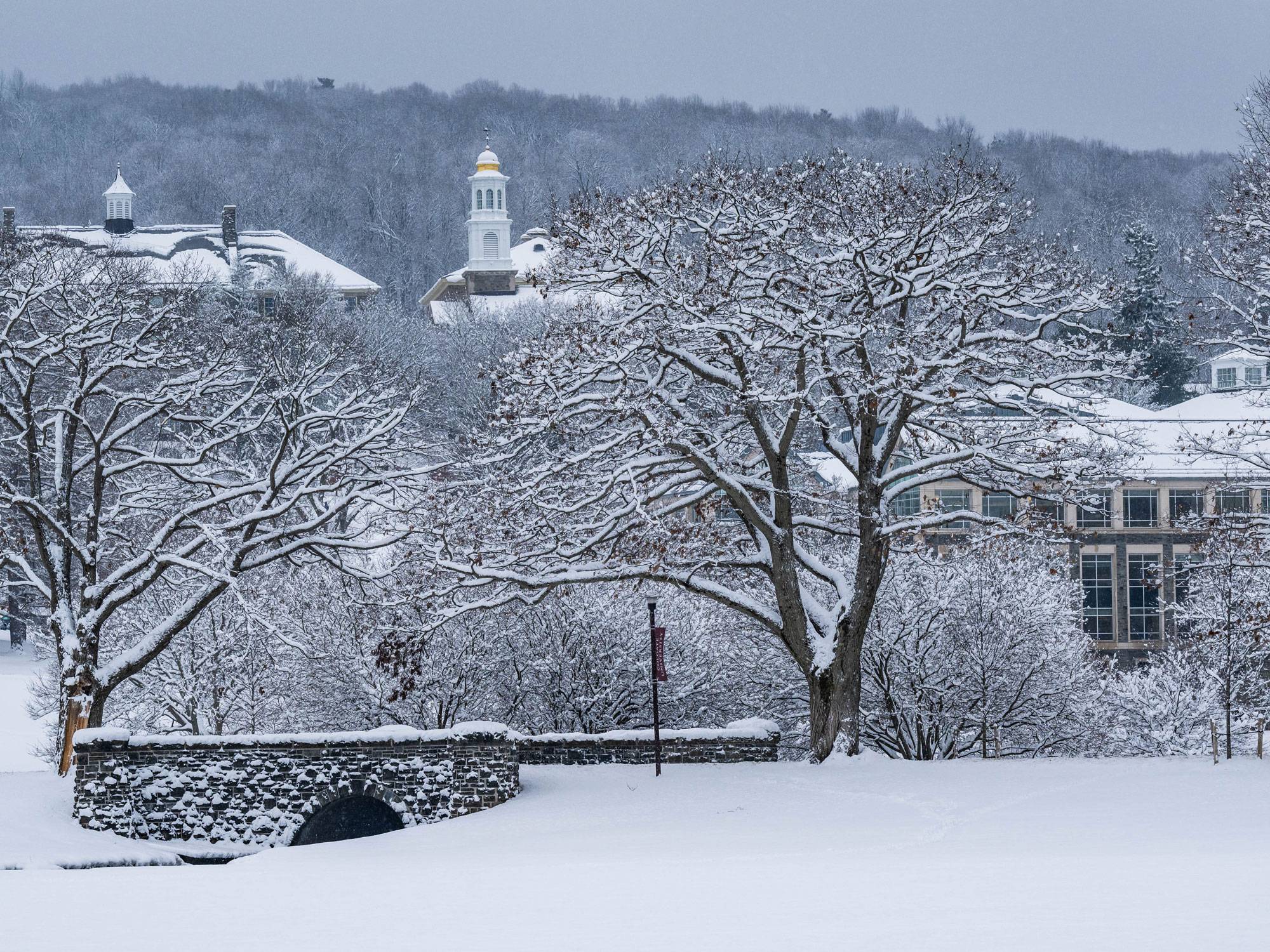Editor’s note: Wondering what’s happening in the classroom at Colgate? Here’s a glimpse into academic life on campus — a syllabus from a recent course.
Advanced Topics: Cryosphere
Joe Levy, Associate Professor of Earth and Environmental Geosciences
Course Description:
In this advanced seminar, Professor Levy introduces junior and senior student researchers to the Earth’s icy regions — the cryosphere. Hands-on mapping challenges and journal article discussions familiarize them with processes such as snowfall and glacier formation. In group-work exercises, students learn how to map data with their peers using GIS and the R programming language.
Course Goals:
This seminar molds a crew of upperclassmen into a research team, wherein each student is valued for distinct contributions. Cohort members aim to become better geoscience researchers by familiarizing themselves with current software and writing about their findings. Their survey of the frozen and increasingly melting parts of Earth includes valleys within the Hamilton area.
Key Assignment:
Alongside their collaborative discussions and fieldwork, students conduct new research on a field site in Antarctica using satellite images, geospatial mapping, and coding. Once they’ve mapped the site, students analyze their permafrost measurements prior to publishing a class abstract on their findings.
The Professor Says:
Understanding the cryosphere is central to the Colgate identity. We sing the Alma Mater song, ‘when through thy valley,’ and this is a valley that was carved by glaciers.
The cryosphere is the lynchpin for the Earth’s climate system and all of the physical and chemical processes that operate on our planet. The reason that we have rain and snow and a familiar climate system is all because of what happens at Earth’s poles — they are the weather-makers. Every time the polar vortex breaks out and dips down in the winter, we feel it. Understanding why the air is so cold is as important as understanding why it’s getting hotter here, and the cryosphere is involved with that feedback.
Every person who drives to Colgate sees evidence of the ice age, which ended about 20,000 years ago. It defines what soils we’re building on and where the hills are — it’s really unavoidable. The giant boulders, steep valleys, and finger lakes are all glacier markers embedded in the landscape here. The rivers and streams follow those old valleys. And once you see one, you start to see the others.
